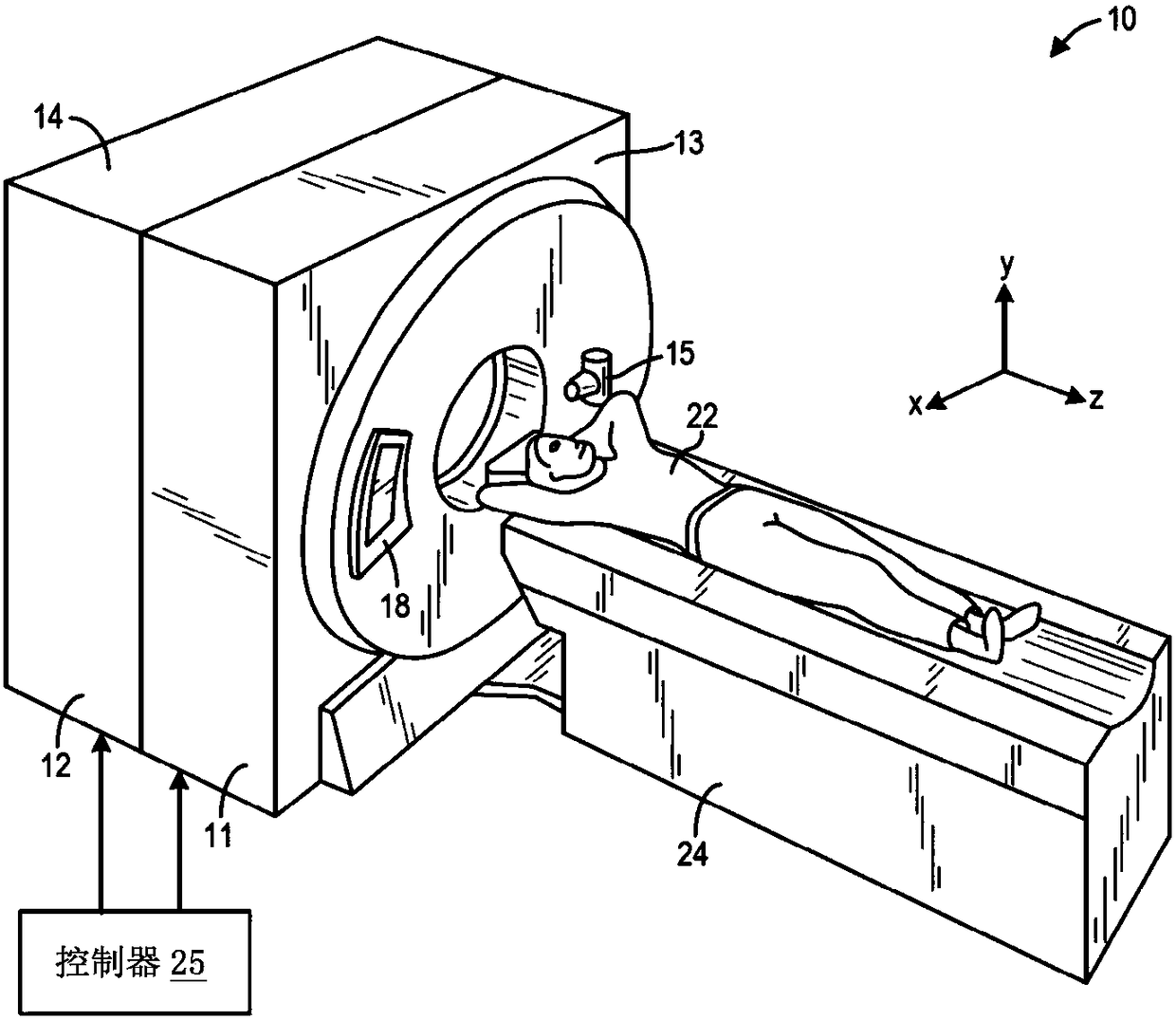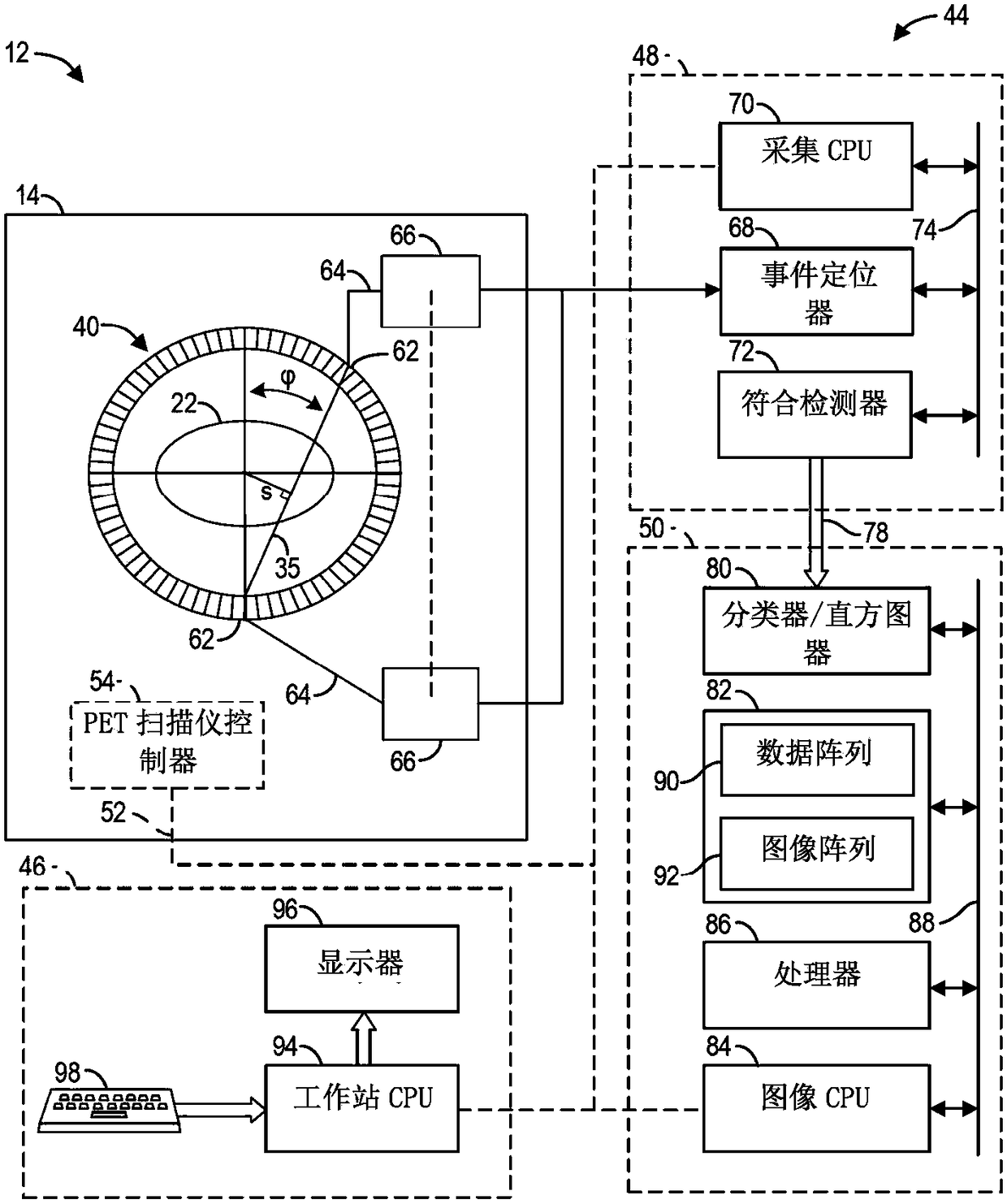Methods and systems for scatter correction in positron emission tomography
An imaging system and tomographic imaging technology are applied in the fields of radiodiagnostic instruments, diagnosis, and applications, which can solve problems such as unknown radioactive activity and difficult scattering
- Summary
- Abstract
- Description
- Claims
- Application Information
AI Technical Summary
Problems solved by technology
Method used
Image
Examples
Embodiment Construction
[0012] The following description relates to various embodiments of a medical imaging system. In particular, methods and systems are provided for compensating for out-of-field (OOF) scatter events using computed tomography (CT) image segmentation. figure 1 An example of an imaging system that can be used to acquire images processed according to the present technique is provided in . In this specification, the imaging system may be a multimodality system. In one embodiment, the multimodal imaging system may be a computed tomography / positron emission tomography (CT / PET) imaging system, wherein the first modality is a CT imaging system and the second modality is a PET imaging system (e.g. ,Such as figure 1 and figure 2 shown).
[0013] When scanning an object with a PET imaging system, scatter events that occur outside the scanner's axial field of view (FOV) can contaminate the signal reaching the imaging system's detector assembly. Such out-of-field (OOF) scattering events ...
PUM
 Login to View More
Login to View More Abstract
Description
Claims
Application Information
 Login to View More
Login to View More - R&D
- Intellectual Property
- Life Sciences
- Materials
- Tech Scout
- Unparalleled Data Quality
- Higher Quality Content
- 60% Fewer Hallucinations
Browse by: Latest US Patents, China's latest patents, Technical Efficacy Thesaurus, Application Domain, Technology Topic, Popular Technical Reports.
© 2025 PatSnap. All rights reserved.Legal|Privacy policy|Modern Slavery Act Transparency Statement|Sitemap|About US| Contact US: help@patsnap.com



